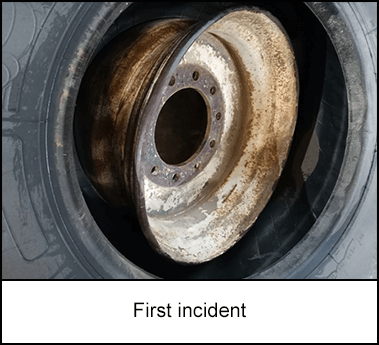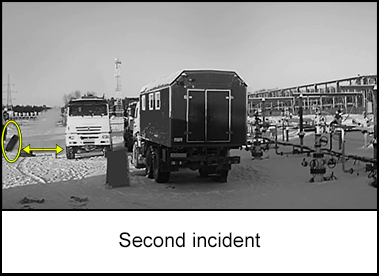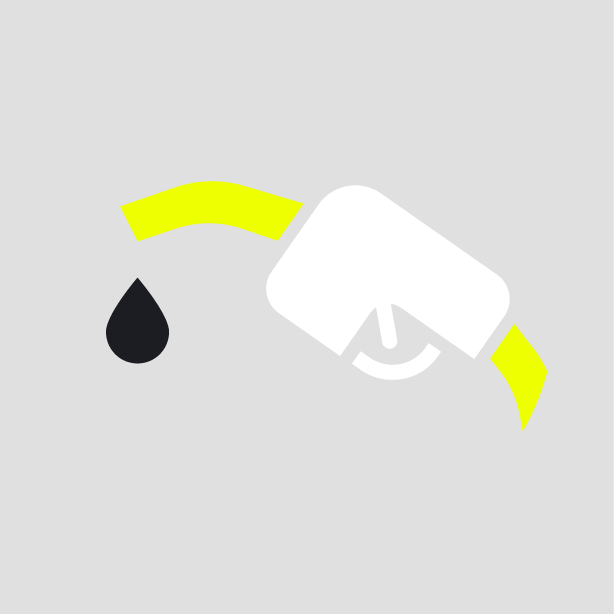-
What happened?
Multiple safety incidents related to vehicle maintenance have been reported. Among these incidents, some have involved tyre maintenance on vehicles. Below are two examples that illustrate the importance of vigilance in vehicle upkeep:
- A contracted tyre technician was struck and killed by a tyre rim after a sudden failure.
- The heavy vehicle tyre was previously inflated inside a safety cage and mounted on a one-piece rim.
- The technician noticed air leaking from the tyre while it was resting outside the safety cage.
- While the technician was inspecting/troubleshooting the tyre, the wheel suddenly parted, causing the rim to eject and hit the technician on the head.
- The fatal outcome was a result of the unexpected release of the tyre rim and the impact on the technician.
- An employee was fatally struck by a heavy vehicle tyre rim during maintenance.
- The heavy vehicle wheel involved had been reported defective by a previous shift driver.
- The driver was loosening the lug nuts of the defective wheel with the intention of replacing it with a spare.
- During this process, the rim catastrophically failed and cracked in two, releasing the tyre and part of the rim with explosive force.
- The driver was projected several metres away from the vehicle due to the force of the release. Unfortunately, the driver sustained fatal injuries as a result of this incident.

- A contracted tyre technician was struck and killed by a tyre rim after a sudden failure.
-
Why did it happen?
Both incidents occurred during routine activities in controlled logistics environments, suggesting that even seemingly standard procedures can carry risks.
Following the incidents, prior damage was noted on the tire rims in both cases. This may have occurred either through wear and tear during rough terrain driving or potentially through driving with a partially deflated tire.
In both incidents, workers were in the line of fire from a pressure hazard and had not recognised this as a risk.
In both incidents, the tires were not deflated prior to the troubleshooting task commencing.
In one incident, substandard practice was noted, in that the wheel was removed from its cage without an inspection of the rim seat area.
In both incidents, tire rim damage had been sustained and not recognised. Subsequent inspection of other vehicles found cases of cracks and damage.
In the first incident, original equipment manufacturer (OEM) recommendations for tire rim inspection had not been followed.
In the second incident, learnings from the first incident had been insufficiently embedded.

-
What did they learn?
The catastrophic failure of the tyre rims resulted in fatal accidents, highlighting the importance of proper inspection and maintenance procedures.
Perform tyre and tyre rim inspections across the fleet of vehicles and verify inclusion of both tyres and tyre rims in vehicle inspection programs.
Raise awareness of the need to deflate tyres before removal from the vehicle.
Raise awareness of the general risk of pressure release from tyres and different modalities where such release can occur.
Reinforce line of fire awareness with all personnel and the importance of avoiding body positioning in the line of fire.
Procure and raise awareness of tools and methods that enable humans to perform any activities related to tyres, such as inflation and deflation, away from the line of fire.
Reinforce the hazard of tyres and tyre rim damage through reflective learning or similar activities.
Attain a deeper understanding of tyre rim construction, types, and inspection requirements as per OEM recommendations.
Reinforce the requirement to monitor for weak signals with respect to tyre and tyre rim construction during driving. Stop the job in case anomalies are noted.
Reinforce the availability of learnings from previous incidents.

-
Ask yourself or your crew
How can something like this happen here (e.g. on our site)?
What safety measures (i.e. procedures, controls/barriers) do we have in place to mitigate the risk?
How do we know the risk controls/barriers are working?
What improvements or changes should we make to the procedures, controls/barriers, or the way we work?

Add to homescreen
Content name
Select existing category:
Content name
New collection
Edit collection
What happened?
Multiple safety incidents related to vehicle maintenance have been reported. Among these incidents, some have involved tyre maintenance on vehicles. Below are two examples that illustrate the importance of vigilance in vehicle upkeep:
- A contracted tyre technician was struck and killed by a tyre rim after a sudden failure.
- The heavy vehicle tyre was previously inflated inside a safety cage and mounted on a one-piece rim.
- The technician noticed air leaking from the tyre while it was resting outside the safety cage.
- While the technician was inspecting/troubleshooting the tyre, the wheel suddenly parted, causing the rim to eject and hit the technician on the head.
- The fatal outcome was a result of the unexpected release of the tyre rim and the impact on the technician.
- An employee was fatally struck by a heavy vehicle tyre rim during maintenance.
- The heavy vehicle wheel involved had been reported defective by a previous shift driver.
- The driver was loosening the lug nuts of the defective wheel with the intention of replacing it with a spare.
- During this process, the rim catastrophically failed and cracked in two, releasing the tyre and part of the rim with explosive force.
- The driver was projected several metres away from the vehicle due to the force of the release. Unfortunately, the driver sustained fatal injuries as a result of this incident.

Why did it happen?
Both incidents occurred during routine activities in controlled logistics environments, suggesting that even seemingly standard procedures can carry risks.
Following the incidents, prior damage was noted on the tire rims in both cases. This may have occurred either through wear and tear during rough terrain driving or potentially through driving with a partially deflated tire.
In both incidents, workers were in the line of fire from a pressure hazard and had not recognised this as a risk.
In both incidents, the tires were not deflated prior to the troubleshooting task commencing.
In one incident, substandard practice was noted, in that the wheel was removed from its cage without an inspection of the rim seat area.
In both incidents, tire rim damage had been sustained and not recognised. Subsequent inspection of other vehicles found cases of cracks and damage.
In the first incident, original equipment manufacturer (OEM) recommendations for tire rim inspection had not been followed.
In the second incident, learnings from the first incident had been insufficiently embedded.

What did they learn?
The catastrophic failure of the tyre rims resulted in fatal accidents, highlighting the importance of proper inspection and maintenance procedures.
Perform tyre and tyre rim inspections across the fleet of vehicles and verify inclusion of both tyres and tyre rims in vehicle inspection programs.
Raise awareness of the need to deflate tyres before removal from the vehicle.
Raise awareness of the general risk of pressure release from tyres and different modalities where such release can occur.
Reinforce line of fire awareness with all personnel and the importance of avoiding body positioning in the line of fire.
Procure and raise awareness of tools and methods that enable humans to perform any activities related to tyres, such as inflation and deflation, away from the line of fire.
Reinforce the hazard of tyres and tyre rim damage through reflective learning or similar activities.
Attain a deeper understanding of tyre rim construction, types, and inspection requirements as per OEM recommendations.
Reinforce the requirement to monitor for weak signals with respect to tyre and tyre rim construction during driving. Stop the job in case anomalies are noted.
Reinforce the availability of learnings from previous incidents.
Ask yourself or your crew
How can something like this happen here (e.g. on our site)?
What safety measures (i.e. procedures, controls/barriers) do we have in place to mitigate the risk?
How do we know the risk controls/barriers are working?
What improvements or changes should we make to the procedures, controls/barriers, or the way we work?
Multiple safety incidents related to vehicle maintenance have been reported. Among these incidents, some have involved tyre maintenance on vehicles, highlighting the importance of proper inspection and maintenance procedures.














